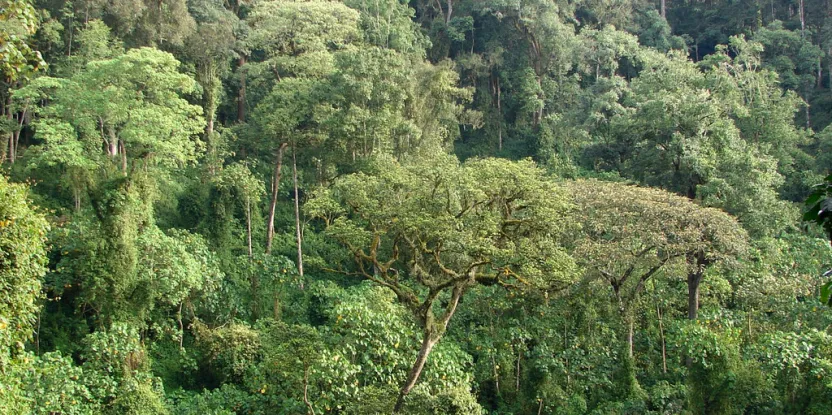ROME, July 29, 2024 – Climate change is increasing the susceptibility of the world’s forests to stressors such as wildfires and pests, according to a new flagship publication by the Food and Agriculture Organisation of the United Nations [FAO] that emphasises the role of innovation in achieving a sustainable future for the forestry sector.
The report, titled “The State of the World’s Forests 2024: Forest-sector innovations towards a more sustainable future,” was released recently at the 27th Session of the Committee on Forestry [COFO] held at FAO’s headquarters in Rome, Italy. COFO is FAO’s top forestry governing body, tasked with identifying emerging policy and technical issues, seeking solutions, and advising FAO on appropriate action. This year’s meeting is themed “Accelerating forest solutions through innovation.”
The State of the World’s Forests 2024 [SOFO 2024] report says there’s evidence to suggest that climate change is making forests more vulnerable to stressors such as wildfires and pests.
Wildfire intensity and frequency are increasing, including in areas not previously affected, with fires in 2023 releasing an estimated 6,687 megatonnes of carbon dioxide globally. Boreal fire was previously responsible for about 10 percent of global carbon dioxide emissions. In 2021, such fires reached a new high, mainly driven by extended drought causing an increase in fire severity and fuel consumption, and accounted for nearly one-quarter of total wildfire emissions.
Climate change also makes forests more vulnerable to invasive species, with insects, pests and disease pathogens threatening tree growth and survival. Pine wood nematode has already caused significant damage to native pine forests in some countries in Asia, and areas of North America are projected to experience devastating damage due to insects and disease by 2027.
Global wood production, meanwhile, remains at record levels. After a brief dip during the COVID-19 pandemic, production is back at about 4 billion cubic meters yearly.
Nearly 6 billion people use non-timber forest products, and 70 percent of the world’s poor rely on wild species for food, medicine, energy, income, and other purposes. Projections indicate that global roundwood demand could increase by as much as 49 percent between 2020 and 2050.
Faced with such challenges, the report argues that forest-sector innovation is a crucial enabler of progress towards achieving the Sustainable Development Goals [SDGs].
“FAO recognises that science and innovation are crucial ingredients for achieving forest-based solutions,” FAO Director-General QU Dongyu wrote in the report’s Forward. “This edition of SOFO will inform FAO’s work to scale up evidence-based innovation in forestry. I believe it will also support FAO Members and other stakeholders in enabling responsible, inclusive, and essential innovation in the forest sector to strengthen sustainability and the resilience of agrifood systems for a better world and a better future for all.”
Innovative solutions
The report identifies five innovation types that enhance forests’ potential to address global challenges: technological, social, policy, institutional, and financial. Examples include the potential for AI to facilitate the automated analysis of a vast volume of existing and future optical, radar, and lidar data collected daily by drones, satellites and space stations; the adoption of mass timber and other wood-based innovations that can replace fossil-based products in the building sector; policies aimed at engaging women, youth and Indigenous peoples in developing locally led solutions; and innovations in public – and private – sector finance to enhance the value of standing forests.
Since innovation can create winners and losers, the report argues for inclusive and gender-responsive approaches to ensure the fair distribution of benefits among men, women and youth in all socioeconomic and ethnic groups. Promoting innovation must consider and integrate all stakeholders’ local circumstances, perspectives, knowledge, needs and rights.
The report lists five enabling actions that will help scale up innovation in the forest sector: raising awareness, boosting innovation skills, capabilities, and knowledge, encouraging transformational partnerships, ensuring more and universally accessible finance for innovation, and providing an incentivising policy and regulatory environment.
It also presents 18 case studies from around the world, which provide a glimpse at the wide range of technological, social, policy, institutional, and financial forest-sector innovations – and combinations of these – that are being tested and implemented in real-world conditions.
https://thecooperator.news/nfa-deploys-digital-tool-to-combat-illegal-activities-in-forests/
Buy your copy of thecooperator magazine from one of our country-wide vending points or an e-copy on emag.thecooperator.news
